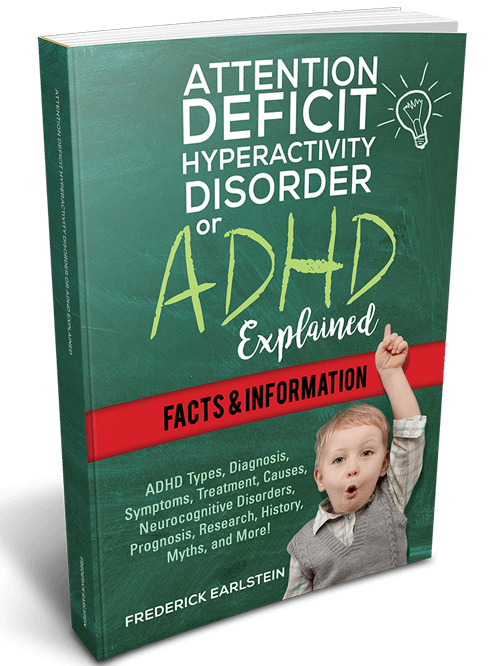CHAPTERS
Navigate to chapter
► Chapter 1: What is ADHD?
► Chapter 2: Types of ADHD
► Chapter 3: Causes of ADHD
► Chapter 4: Symptoms and Diagnosis of ADHD
► Chapter 5: Treatment and Management of ADHD
► Chapter 6: Alternative or Supportive Treatments for ADHD
► Chapter 7: The Future of ADHD
Chapter 2: Types of ADHD
ADHD is divided into three different types, based primarily on the prominent or prevalent symptoms that a person has. Based on the definition of ADHD, there are three behavioral patterns that are affected among persons diagnosed with ADHD:
- Inattention – Disorganization, attention wanders off tasks, lacks persistence, difficulty sustaining focus – when these problems are not due to defiance or lack of comprehension. A person suffering from inattention gets distracted easily, has poor concentration and organizational skills.
- Hyperactivity – Constant movement, excessive fidgeting, tapping, or talking, even in situations where it is not appropriate. In adults, hyperactivity can be seen as extreme restlessness or constant activity. A hyperactive person never seems to slow down, is constantly talking and fidgeting, and has difficulty staying on task.
- Impulsivity – Hasty actions without forethought and which may have high potential for harm, or a desire for immediate rewards or inability to delay gratification. A person may also be socially intrusive, interrupts others excessively, or makes important decisions without considering long-term consequences.
The three types of ADHD are, therefore:
- Predominantly inattentive;
- Predominantly hyperactive-impulsive;
- A combination thereof
It is important to note that not all individuals may experience or show these symptoms in the same way. The treatment that may eventually be deemed best for an individual will largely be based on the symptoms he or she has. Below we take a closer look at these three different types of ADHD.
Different types of ADHD
A child diagnosed with a Predominantly Inattentive Type of ADHD has difficulty focusing or concentrating. While most children can have moments of inattention, and dreamer-type children can often be found staring out a window, lost in thought, this does not necessarily mean that they have ADHD. To constitute the inattentive type of ADHD, the child’s symptoms are more severe and causes more difficulty for them in their daily functions as compared to children with normal bouts of inattention.
In the Predominantly Inattentive-type of ADHD, an individual may be disorganized, is easily distracted, has trouble prioritizing, and has difficulty starting and finishing tasks. They can have trouble concentrating even while reading something. This inability to stay focused can have a negative impact on their ambitions, relationships, school or work goals, and careers.
In contrast to the Predominantly Inattentive Type, individuals with the Predominantly Hyperactive-Impulsive Type of ADHD are, as the name suggests, characterized by hyperactivity and impulsivity. Although they may also display symptoms of inattention, these are not as marked or as predominant as the symptoms of hyperactivity and impulsivity.
These individuals can be quite disruptive in a learning setting such as a school. And similar to the Inattentive Type ADHD, the hyperactivity has to be more extreme than that of most normal, high-energy children. It is a very real kind of restlessness and a need for constant activity or motion. The type of hyperactivity and impulsivity which constitutes ADHD will cause very real problems in a child’s life – including difficulty learning, difficulty in social situations when they speak out of turn, talk too much, interrupt other people, are socially intrusive, or are easily bored. They may engage in an activity or make major decisions without first considering long-term consequences, or the potential for harm.
The Combination Type ADHD among individuals usually means an almost coequal manifestation of the symptoms of both inattentive and hyperactive-impulsive type ADHD. This is actually considered to be the most common type of ADHD, as most individuals diagnosed with ADHD usually show symptoms of both types at one point or another.
Seven Types of ADHD by Dr. Daniel Amen
Interestingly, psychiatrist Dr. Daniel Amen has recently proposed 7 different types of ADHD, as opposed to the 3 conventional types. He built on work started in the 1980s by Joel Lubar, PhD, who found that children and teenagers with ADD had decreased brain activity during concentration. Normal brain response usually shows faster or increased brain wave activity during concentration, but Lubar’s research showed slower brain waves in the frontal lobes. This was followed by 1990 findings by Dr. Alan Zametkin that showed significant brain underactivity in the prefrontal cortex of people with ADHD in response to an intellectual challenge. Normally, one expects an increase, rather than a decrease in brain activity during periods of concentration or intellectual problems. To bolster these findings, they also found a significant underproduction and unavailability of dopamine in the brain.
Continue Reading…
Want to read the entire thing?

